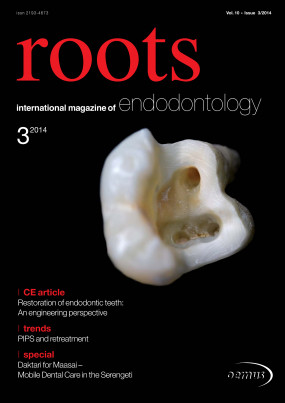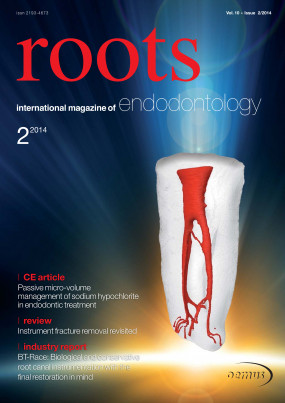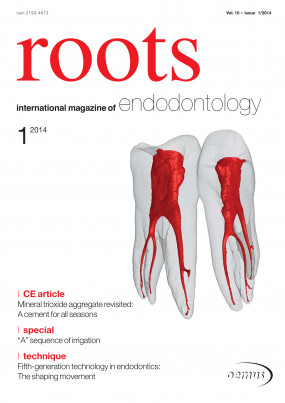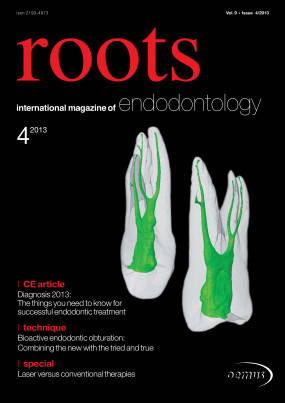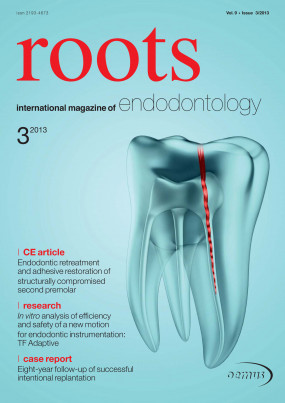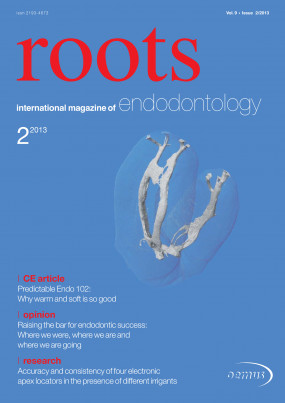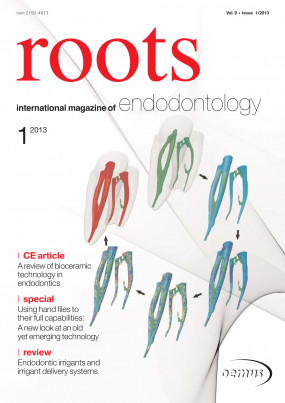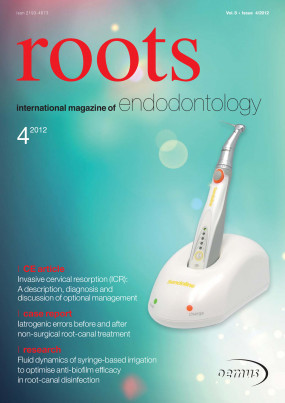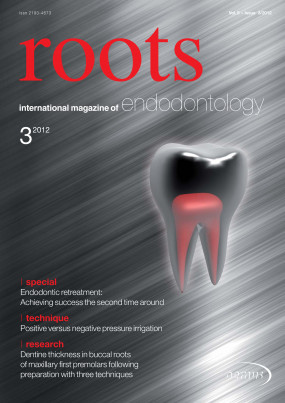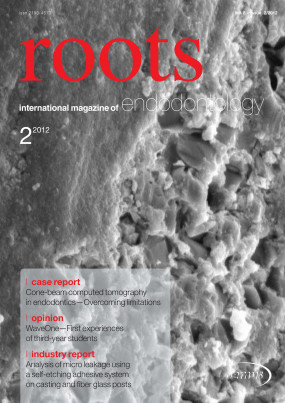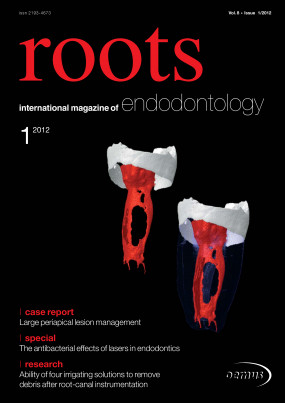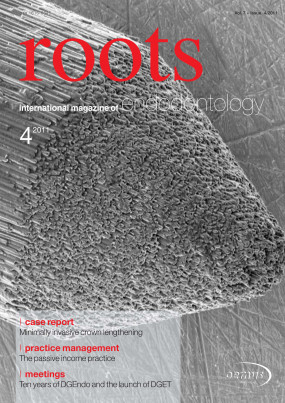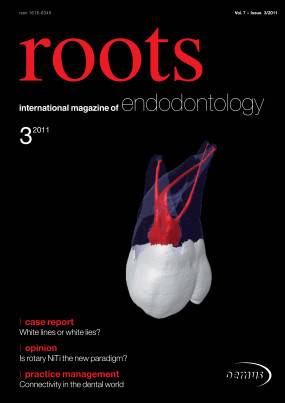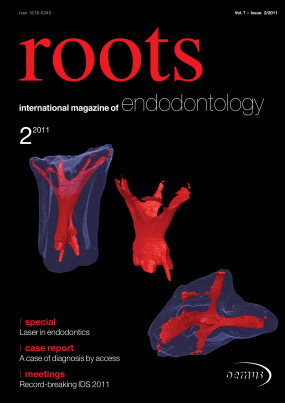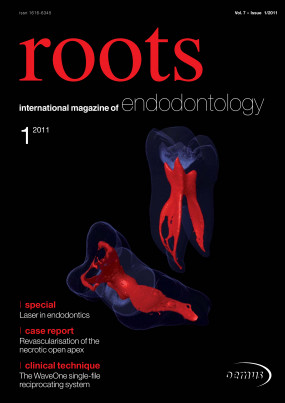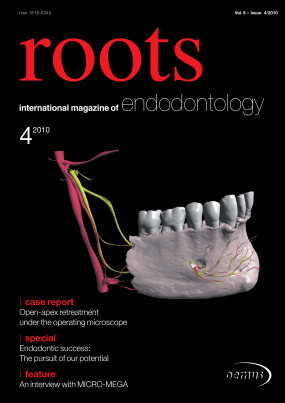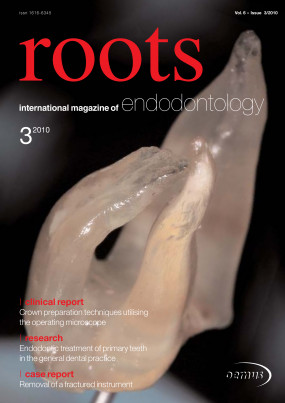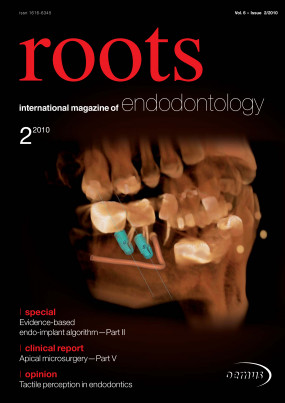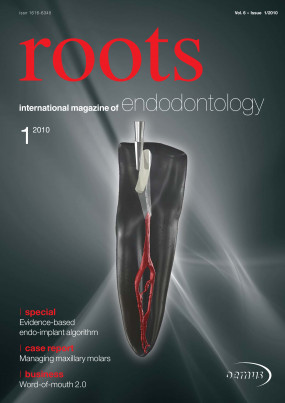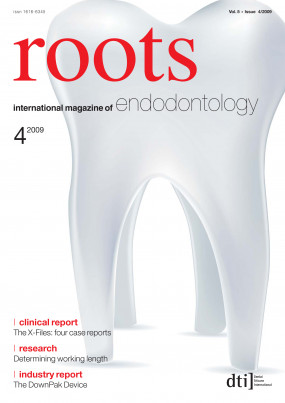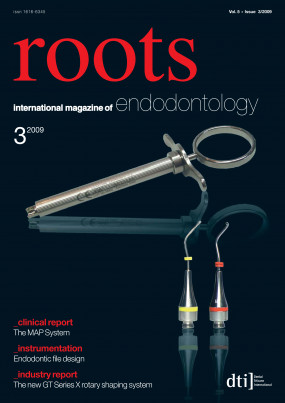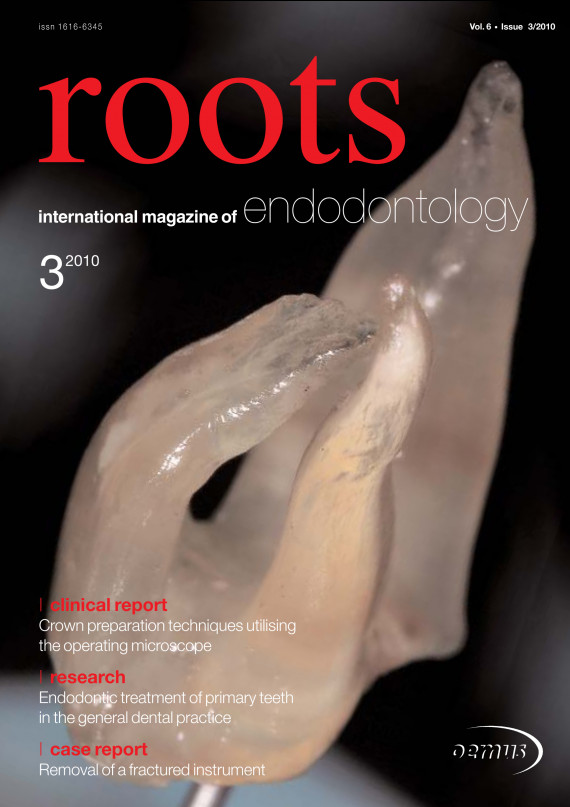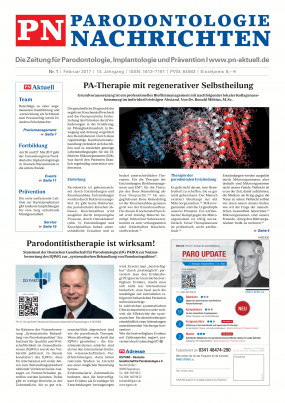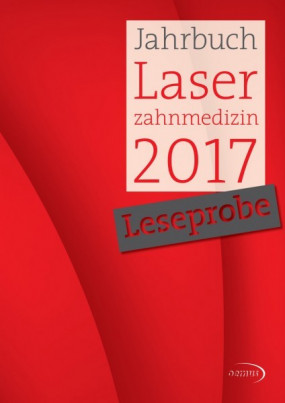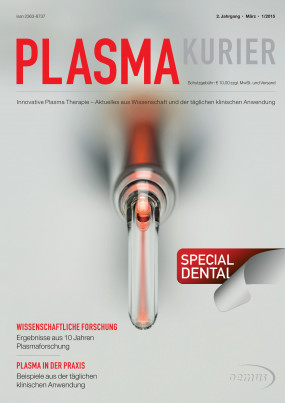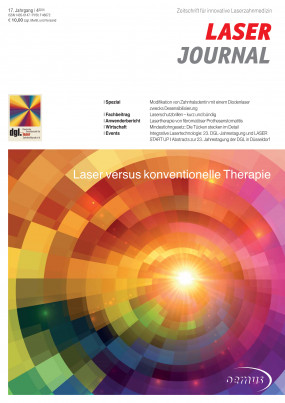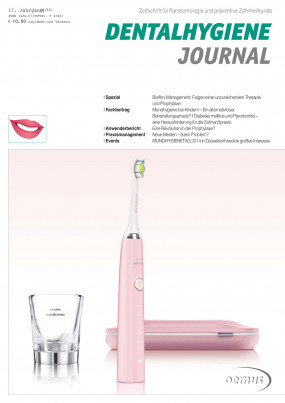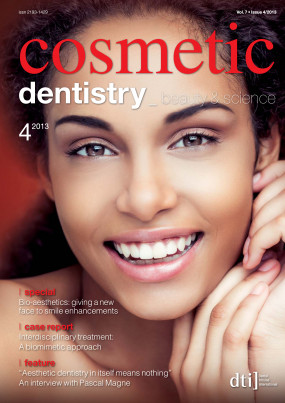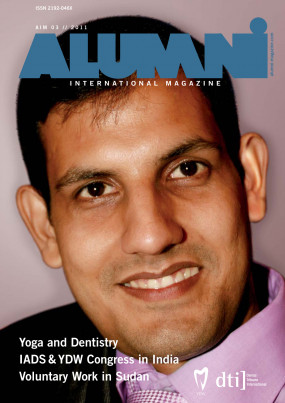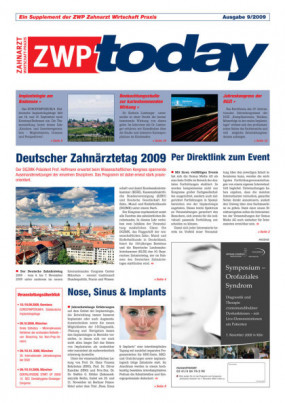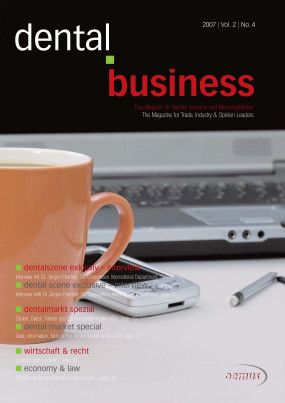Inhaltsverzeichnis
3
It is my pleasure to share with you greetings on behalf of the American Association of Endodontists (AAE). This year, our association set the theme of Bridging the Gap in seeking to enhance communication and partnerships with various professional groups: general dentists, dental specialists, dental students and international communities, amongst others. Our efforts in this regard have taken shape in a few significant initiatives. I encourage you to evaluate and take advantage of them, for the benefit of your referral relationships and professional growth...
6
I invented the Continuous Wave of Obturation Technique (CWOT) in 1986 and used it with the Touch’n Heat (SybronEndo) until the winter season of 1988/1989. At this time, Johan Massreillez of -Analytic Technologies asked me whether I could use his heat source with temperature control-designed for hospital surgical operating rooms. It worked better for my technique and pluggers, as it was -easier to control the heat. In 1994, SybronEndo bought Analytic Technologies and the rest is history. As with any method of obturation, its success is completely dependent upon the cleaning and shaping of the root canal system. The steps for the CWOT are detailed below...
10
Successful crown preparations start at the diagnosis. Early detection of the need for a full-coverage restorative can minimise many difficulties associated with the preparation of a tooth for a crown, obtaining an accurate impression, and the achievement of a precise fitting, long-lasting, aesthetic restoration. Proper diagnosis is the all-important first step...
18
All steps have been meticulously followed, the root-end fill has been placed, the crypt has refilled nicely, the final radiograph has been approved and it is time to suture the flap into position. Sadly, most operators now push the operating microscope (OM) aside and suture without it. Doing so robs the operator of an opportunity to demonstrate to themselves and their patients, the amazing capabilities of the OM. The operator must make a commitment to master the suturing technique using the OM. It will never be accomplished with the OM pushed aside at this critical step in the apical microsurgical procedure. The following is based largely on my own experiences over the 12 years of performing, teaching and writing about apical microsurgery...
22
Introduction of a novel obturation method: The single-matched, taper-sized gutta-percha cone technique
Dr Mohammed A. Alshehri, Saudi Arabia
Root-canal treatment consists of 3-D filling of the root-canal system with gutta-percha and sealer, with the goal of maximising the amount of solid core material and minimising the amount of sealer.1 Before this can be achieved, the root canal must be chemo-mechanically prepared to a sufficient shape and size in order to eradicate micro-organisms within the root canal system and facilitate filling of the root canal...
26
The most common endodontic treatment of primary teeth is pulpotomy, which is used in the case of carious, iatrogenic or traumatic damage of the pulp. As prerequisite for such a procedure, the patient has to be free of clinical symptoms, according to the DGZMK.1 As per UK Guideline2 and Weisshaar,3 this condition is still met in cases of temporary discomfort or short, spontaneous pain...
32
_Fractured instruments pose a challenge to every endodontist. The difficulty in the retrieval of these instruments ranges from surprisingly easy to downright impossible. The clinical outcome of cases with fractured instruments depends on several factors, such as the position of the instrument in the canal, the type of material, the instrument size and canal anatomy.1 Failure in retrieval of the fractured instrument does not automatically result in failure of the case.2 One can still try to bypass the instrument, choose a surgical approach, or even wait and see. However, if we bear ‘nothing ventured, nothing gained’ in mind, then we should always at least try to retrieve the fractured instrument...
38
Root-canal retreatment is a predictable treatment modality. When patients were informed about this treatment option in the past, the dentist often over-emphasised the possibility of failure. This still occurs today, however more and more practitioners are realising that root-canal retreatment can be a hugely successful treatment modality and can save the patients natural teeth while still maintaining prosthetic replacement options for the future should it become necessary. In our private practice, approximately 50 per cent of referred cases are endodontic retreatments and, using modern state-of-the-art techniques, success rates from 70 to 95 per cent are possible, which is in line with recently published outcome studies...
42
Interview: “The goals of treatment for primary teeth are not much different to that for permanent teeth”
An interview with Prof Jill Fernandez and Drs Neal Herman and Lily Lim, New York University, USA
In July, paediatric dentistry specialists gathered in Pasay City, the Philippines, for the 7th biennial congress of the Pediatric Dentistry Association of Asia. roots spoke with presenters Prof Jill Fernandez and Drs Neal Herman and Lily Lim from the New York University about their participation and recent developments in the field...
46
What do Barcelona and endodontics have in common? For me, the answer was nothing, until this year’s Roots Summit, which was held from 3 to 5 June 2010. From now onwards, I will forever connect Gaudí, Paella and La Sagrada Família with root canals...
49
50
Imprint: About the publisher
Copyright Regulations _roots international magazine of endodontology is published by Oemus Media AG and will appear in 2010 with one issue every quarter. The magazine and all articles and illustrations therein are protected by copyright. Any utilisation w
Kein Kurztext vorhanden. Schauen Sie in die PDF.
